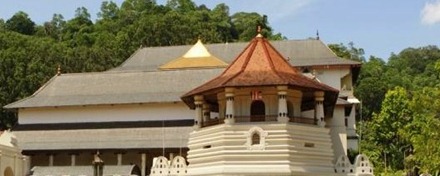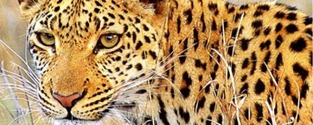Photo Gallery
Sigiriya
Built in the 5 century AC this magnificent complex of geometrically laid gardens, pools, fountains (still working today) as well as oldest surviving murals of maidens has been a palace of the King Kasyapa.
century AC this magnificent complex of geometrically laid gardens, pools, fountains (still working today) as well as oldest surviving murals of maidens has been a palace of the King Kasyapa.
Built on top of a 200m high rock, the entrance to the climb once has been through a lions head. Only the huge paws remain today. Half way up the rock are beautifully drawn painted bare breast Maidens whose existence is still a mystery. Which should be the eighth wonder of the world, Sigiriaya, is a must see item in Sri Lanka. The occupation of the gigantic fortress ended when Kasyapa killed himself in a battle with his brother.
Dabulla
 Dambulla is a part of the Cultural Triangle declared by UNESCO is on the main road from Sigiriya to Kandy about 19Km from Sigiriya. There are over 80 caves in the surrounding and some of them have been used by the monks as meditation locations. Major attractions are spread over 5 caves, which contain the statues and the paintings. Since it's founding in the 1 century BC by King Valagamba, many improvements and additions have been carried out to the sculptures and paintings over the years. Hindu statues are believed to be of the 12 century AD and the latest paintings are of the late 18-century. The temple is a perfect location to view evolution of the ancient Sri Lankan arts. Dambulla is a unique and important historical site because of the amalgamation of the material from many eras.
Dambulla is a part of the Cultural Triangle declared by UNESCO is on the main road from Sigiriya to Kandy about 19Km from Sigiriya. There are over 80 caves in the surrounding and some of them have been used by the monks as meditation locations. Major attractions are spread over 5 caves, which contain the statues and the paintings. Since it's founding in the 1 century BC by King Valagamba, many improvements and additions have been carried out to the sculptures and paintings over the years. Hindu statues are believed to be of the 12 century AD and the latest paintings are of the late 18-century. The temple is a perfect location to view evolution of the ancient Sri Lankan arts. Dambulla is a unique and important historical site because of the amalgamation of the material from many eras.
Trincomale Beaches
 Nilaweli and Uppuveli 16 kM and 6kM north of the city respectively are among the best beaches in Sri Lanka. Knee deep shallow seas spreads out hundreds of meters towards the sea. An ideal place for sun bathing and snorkelling.
Nilaweli and Uppuveli 16 kM and 6kM north of the city respectively are among the best beaches in Sri Lanka. Knee deep shallow seas spreads out hundreds of meters towards the sea. An ideal place for sun bathing and snorkelling.
Swami Rock
 A shear rock outcrop called Swami Rock, several meters high above the sea is the tip of the Fort Frederick thus named by the British. having being occupied by the Dutch and the Portuguese. The massive Hindu temple dedicated Koneswara has said to have been stood here until it had been destroyed by the Portuguese. A modern temple is now built around the same location. Within the Swami Rock is Lover's Leap where a Dutch Officer's daughter had leapt after a broken affair.
A shear rock outcrop called Swami Rock, several meters high above the sea is the tip of the Fort Frederick thus named by the British. having being occupied by the Dutch and the Portuguese. The massive Hindu temple dedicated Koneswara has said to have been stood here until it had been destroyed by the Portuguese. A modern temple is now built around the same location. Within the Swami Rock is Lover's Leap where a Dutch Officer's daughter had leapt after a broken affair.
Sigiriya
Built in the 5
Built on top of a 200m high rock, the entrance to the climb once has been through a lions head. Only the huge paws remain today. Half way up the rock are beautifully drawn painted bare breast Maidens whose existence is still a mystery. Which should be the eighth wonder of the world, Sigiriaya, is a must see item in Sri Lanka. The occupation of the gigantic fortress ended when Kasyapa killed himself in a battle with his brother.
Dabulla
Trincomale Beaches
Swami Rock






























